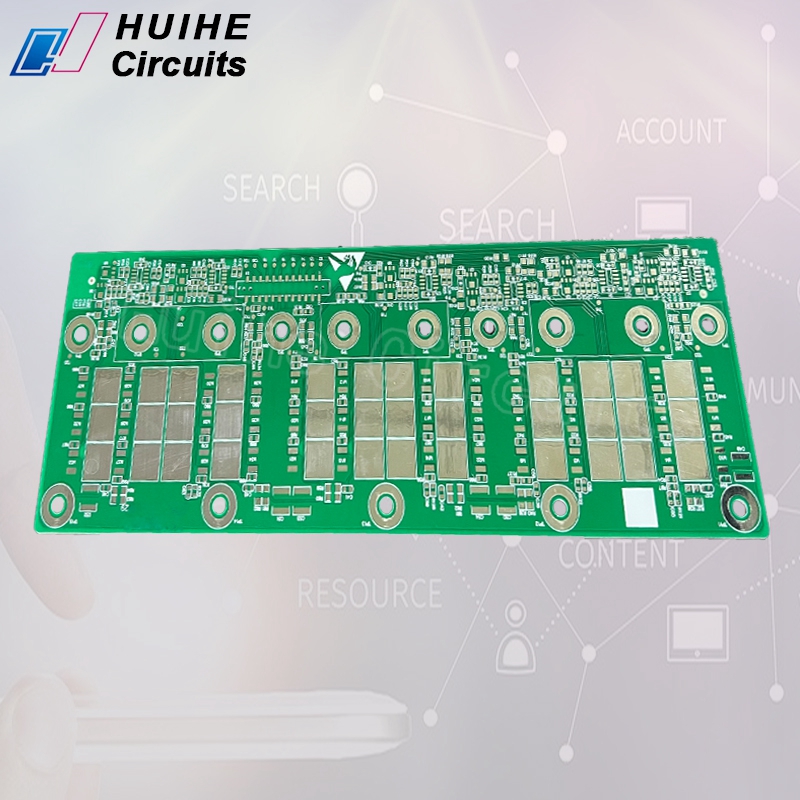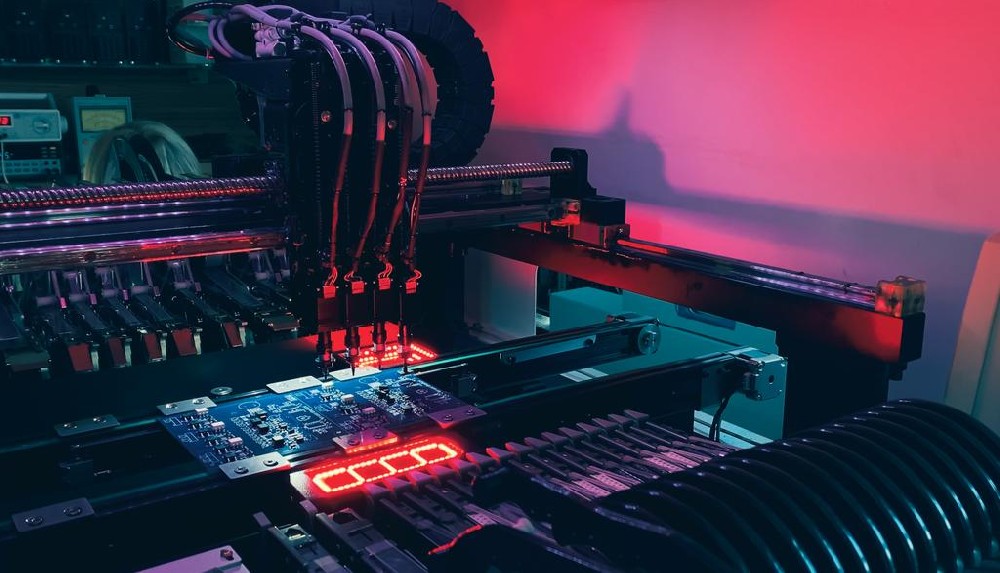China Aluminum PCB
Home < Aluminum PCB < China Aluminum PCB
2023-01-04 17:27:43 Aluminum PCB 358 Viewed
SummaryTypes of Aluminum PCBAluminum PCB, Metal Clad Printed Circuit Board (MCPCB), thermally conductive PCB, etc. The advantage of aluminum PCB boards is that the heat dissipation is significantly better than the standard FR4 structure, and the dielectric used is usually 5 to 10 times the thermal conducti...
Types of Aluminum PCB
Aluminum PCB, Metal Clad Printed Circuit Board (MCPCB), thermally conductive PCB, etc. The advantage of aluminum PCB boards is that the heat dissipation is significantly better than the standard FR4 structure, and the dielectric used is usually 5 to 10 times the thermal conductivity of conventional epoxy glass, and one-tenth of the thickness of the heat transfer index is more efficient than the traditional rigid PCB, let's learn about the types of aluminum PCB.
1. Flexible Aluminum PCB
One of the latest developments in aluminum PCB materials is flexible dielectrics. These materials provide excellent electrical insulation, flexibility and thermal conductivity. When applying flexible aluminum PCB material, products can be formed to achieve various shapes and angles, which can eliminate expensive fixtures, cables and connectors. Although these materials are flexible, they are designed to bend into place and stay in place.
2. Mixed Aluminum PCB
In the "hybrid" configuration, the non-thermal "subassemblies" are processed independently, and then the hybrid aluminum PCB is thermally bonded to the aluminum substrate. The most common construction is a 2-layer or 4-layer subassembly made of traditional FR4, bonding this layer to an aluminum PCB base with a thermal dielectric can help with heat dissipation, improve rigidity and act as a shield. Other benefits include:
1. Aluminum PCBs are less expensive than building all thermally conductive materials.
2. Aluminum PCB provides better thermal performance than standard FR-4 products.
3. Aluminum PCB can eliminate expensive heat sink and related assembly steps.
4. Aluminum PCB can be used in RF applications that require the RF loss characteristics of PTFE surface layer.
5. Use component windows in aluminum PCBs to accommodate through-hole components, allowing connectors and cables to pass connections through the substrate, while solder fillets create a seal without the need for special gaskets or other expensive adapters.
3. Multilayer Aluminum PCB
In the high-performance power supply market, multilayer aluminum PCBs are made of multiple layers of thermally conductive dielectrics. These structures have one or more layers of circuitry embedded in a dielectric, with blind vias serving as thermal vias or signal paths. While it is more expensive and less efficient to transfer heat in a single layer design, multilayer aluminum PCBs offer a simple and effective thermal solution for more complex designs.
4. Through-hole Aluminum PCB
In the most complex structures, a layer of aluminum can form the "core" of a multilayer thermal structure. Aluminum is pre-plated and filled with dielectric prior to lamination. Thermal material or subassemblies can be laminated to both sides of the aluminum using a thermal adhesive material. Once laminated, the finished assembly resembles a conventional multilayer aluminum PCB by drilling holes. Plated through-holes go through gaps in the aluminum to maintain electrical isolation. Or a copper core may allow direct electrical connection as well as insulated vias.
Application of Aluminum PCB
Aluminum PCB has excellent electrical properties, heat dissipation, electromagnetic shielding, high dielectric strength and bending resistance. Aluminum PCB is widely used in high-power LED lighting, power supply, TV backlight, automobile, computer, air conditioner frequency conversion module, aerospace electronics, telecommunications, medical, audio and many other industries. Even the most commonly used mobile phone camera, aluminum PCB is an essential part of the mobile phone. As a kind of metal core PCB (MCPCB), aluminum PCB has many similarities with FR4 PCB in manufacturing process or technology, such as thick copper foil etching, aluminum surface etching protection, aluminum PCB manufacturing and solder mask printing, etc.
Aluminum PCBs have flourished since they were first used in power amplifying hybrid integrated circuits (ICs) in the 1970s. In recent years, due to the promotion of the LED industry, the application and development trend of aluminum PCB has become increasingly widespread. Therefore, it is necessary to understand some important characteristics of aluminum PCBs in order to make better use of them in products or industries.
Aluminum PCB Structure
When it comes to the structure of aluminum PCB, it really refers to the aluminum copper clad laminate (CCL) structure composed of copper foil, dielectric layer, aluminum base, aluminum base film (optional). The structure of the aluminum CCL is shown below.
Copper foil layer
The CCL of aluminum PCB has the same copper foil layer as normal CCL, and the circuit layer needs a larger current-carrying capacity, which is why thicker copper circuits are selected, and the thickness is from 1oz to 10oz. The back of the copper foil is chemically oxidized, and the surface is galvanized and brass plated to improve peel strength.
Dielectric layer
The dielectric layer of aluminum PCB is composed of a layer of thermally conductive and low thermal resistance dielectric material with a thickness between 50 μm and 200 μm, which is the core technology of aluminum PCB. It has excellent resistance to thermal aging and can withstand mechanical and thermal stress.
Aluminum base
The aluminum base layer is actually an aluminum PCB material, which is the supporting component of the aluminum base layer. It requires high thermal conductivity and is suitable for general mechanical manufacturing, such as drilling, punching, and cutting.
Aluminum base film
The aluminum-based film protects the aluminum surface from scratches and corrosive agents. The film can be divided into ordinary (below 120°C) and high temperature resistant (250°C). The latter satisfies hot air solder leveling as a surface finish requirement.
Manufacturing Difficulties of Aluminum PCB
Whether it is a single-layer aluminum PCB, a double-layer aluminum PCB, or a multi-layer aluminum PCB, the manufacturing process of FR4 PCB has many similarities. However, as an advanced PCB, the manufacturing process of aluminum PCB still has its particularity, which requires strict and effective management and control.
Thick Copper Foil Etching
Aluminum PCBs are usually used in power devices with high power density, so the copper foil is relatively thick. When the aluminum PCB has a copper foil thickness of 3 oz or more, copper foil etching requires line width compensation. Otherwise, the line width will be out of tolerance after etching. Therefore, in order to ensure that the optimal line width/spacing and impedance control can meet the design requirements, the following work needs to be completed in advance when designing an aluminum PCB.
1. Aluminum PCB should be properly designed for line width compensation.
2. The aluminum PCB should eliminate the influence of line manufacturing on line width/line spacing.
3. The etching factor and etchant parameters of aluminum PCB should be strictly controlled.
Solder mask printing
Due to the influence of thick copper foil, solder mask printing has always been considered a manufacturing difficulty in aluminum PCB manufacturing. If the copper thickness of the circuit after image etching is too large, there will be a large difference between the surface of the circuit and the aluminum PCB substrate, making it difficult to mask the solder. In order to ensure the smooth progress of solder mask printing, the following principles should be followed:
1. Solder masking oil with excellent performance should be selected.
2. Adopt secondary solder resist printing.
3. If necessary, use the manufacturing method of first filling the resin and then masking the solder.
Machine made
Mechanically fabricated aluminum PCBs include mechanical drilling, milling and forming, v-notches and burrs tend to remain inside via holes, which will reduce electrical strength. Therefore, to ensure high-quality aluminum PCB machinery manufacturing, the following principles should be adhered to:
1. Electric milling and professional milling cutters should be used for small batch production of aluminum PCB.
2. The control technology and mode that should be paid attention to during the aluminum PCB mold forming process.
3. Drilling parameters should be properly adjusted on thick copper and aluminum PCBs to prevent burrs.
Previous:Aluminum PCB China
Next:没有了!
Aluminum PCB Description
aluminum pcb, aluminum pcb manufacturer, aluminum pcb board, aluminum pcb factory, aluminum pcb led, flexible aluminum pcb, aluminum pcb china, aluminum PCB prototyping, aluminum PCB quotes, single side aluminum PCB
Aluminum PCB materials
As the substrate material of the aluminum PCB, the metal aluminum-based copper-clad laminate mainly plays the role of interconnection, conduction, insulation and support for the aluminum PCB, and has a great influence on the transmission speed, energy loss and characteristic impedance of the signal in the line. influences.
Aluminum pcb manufacturing process
Aluminum PCB is a kind of metal copper clad board with good heat dissipation, aluminum PCB can be reduced to the minimum thermal resistance value, so that aluminum PCB has good thermal conductivity, compared with thick film ceramic circuit, aluminum PCB mechanical performance is very excellent.
China Aluminum PCB Related Articles
Aluminum PCB News
Aluminum PCB Tags
You May Also Like
Huihe PCB Site Information
- Article Statistics:191 Articles



